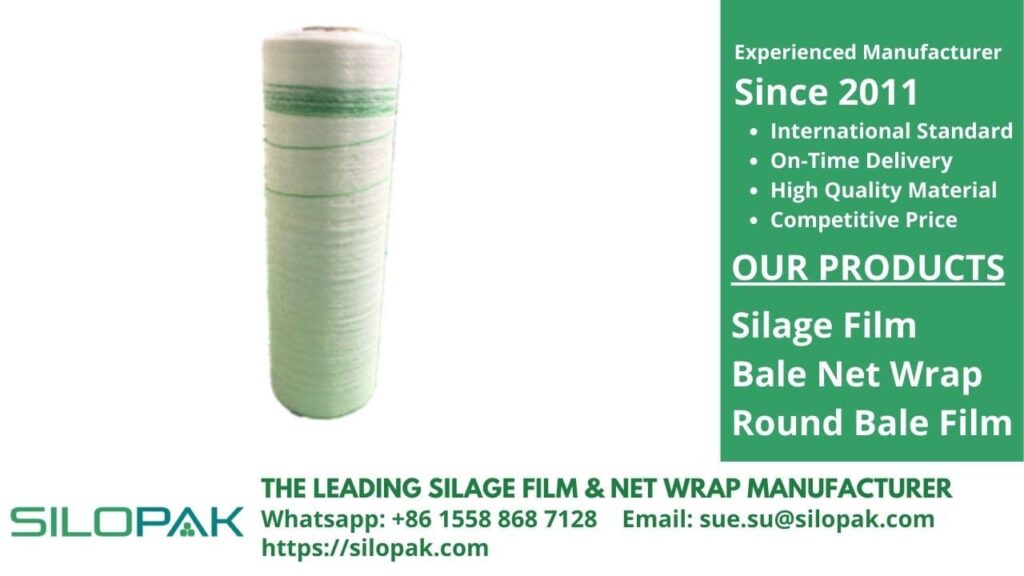
To store hay as bales is to think about additional costs as well as benefits that come with it compared to sticking with harvesting dry hay. A proper management system is required to be put in place so that you can successfully derive all the potential advantages. Using bale net wrap is one of such proper management you can try implementing.
contents
Good Things about Bale Net Wrap
Plastic bale net wrap has gained massive popularity in the last few decades. Interests have been directed toward the use of this specific tool for wrapping forage in the preparation of livestock feed. Some reasons contribute to the rising fame of plastic wrap, namely:
- Reduced drying time,
- Reduced dry matter losses,
- Convenient storing, and
- Reduced risks from weather conditions.
However, despite all the advantages it provides, bale net wrap still comes with one major drawback: It has a higher price tag compared to other wrapping options. Not only is it more costly, but you will also have to think about the expenses directed at disposing of the plastic. This will surely take up more of your time.
Despite the fact, though, farmers are loyal to the product nonetheless. Higher budgetary concerns can be covered by time efficiency and improved productivity, which means business, of course. This is largely due to the fact that plastic wrap is the ultimate practical product that helps farmers achieve more in a shorter period. It is also very versatile, being suitable for farms of any size.
Another thing that comes from the rise of plastic wrap is it opens more doors of business opportunities for farmers with keen commercial eyes. Many farmers these days also run custom wrapping services alongside the main operation. This is beneficial to farms that happen to be unable to afford their wrapping implements.
How Bale Net Wrap Maintains Moisture
What about the quality of the feed wrapped in plastic bale net wrap? Will it deteriorate? If so, then using this tool will utterly negate the purpose, won’t it? To be able to address this subject, we should take a look at the one aspect that plays the biggest role in keeping the bales fresh and on top of their condition: Moisture. Farmers tend to be fussy about moisture levels, with many preferring the bales to be a little on the drier side of the spectrum. Ideal moisture levels should be between 45 to 55%.
At a moisture level within this range, the fermentation process is facilitated in a favorable condition. Bales of moisture levels lower than 42% are incapable of accommodating the production of lactic acid. In the absence of the fermentation process, spoilage is only prevented by the state of being wrapped. On the flip side, too high moisture levels lead to the increase of both ammonia and butyric acid. The resulting bales will be too wet, slimy, and has an unpleasant odor.
How Much Should Be Utilized?
Quantity is another concern that stems from the use of bale net wrap. To produce quality bales, as much air as possible should be emptied from the inside of the bundle, which means the bales must be wrapped tightly. This also means that enough material should be utilized to prevent air from moving into the package. Long story short, the thickness of the plastic is perceived to be the most essential aspect more than its quantity. It is suggested that you should go for a plastic wrap of 6 ml thickness.
The Right Time to Use Bale Net Wrap
Have you ever been in a situation where you’ve completed the baling process yet you don’t have time to wrap all the batches due to some emergency? This situation gives rise to another concern in the use of bale net wrap: What is the ideal time to wrap bales?
Ideally, the bales should have been wrapped once you’ve completed the baling process. The longer the bundles sit out in the open, the higher the risks of them developing quality issues. Try to complete wrapping the bales within 12 hours after baling. You can start worrying about quality issues for the bales that are left unwrapped for up to 24 hours. Bales unattended for more than 24 hours drop in their quality.
The popularity of bale net wrap doesn’t seem to be a fluke or mere trend. It’s here to stay, so you might as well start adopting it for your operation. Lucky for you, we do offer quality wrap here at Silopak. Come by our website, and let’s discuss any concerns you may have.

